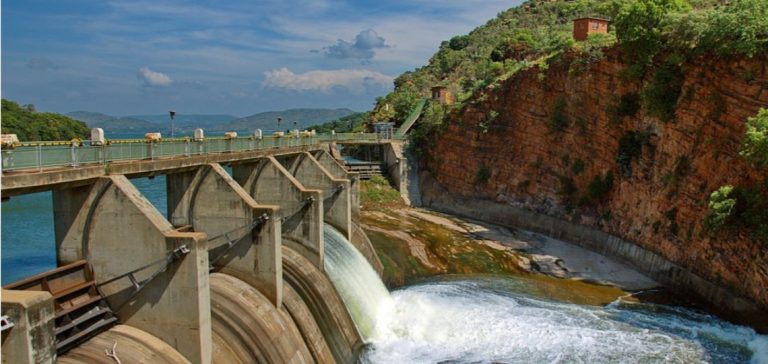Uganda is embarking on a major expansion of its energy infrastructure by launching three hydropower projects on the Nile, aiming to increase its electricity production capacity by 1,632 megawatts (MW). These initiatives include the Ayago (840 MW), Kiba (400 MW), and Oriang (392 MW) plants, which, once completed, will bring the country’s total capacity to around 3,678 MW, representing a significant 80% increase over current levels.
Energy demand in Uganda is growing rapidly, estimated at 10% per year, mainly due to accelerated urbanization and industrial expansion. Currently, nearly 85% of the country’s energy production comes from hydropower, while the rest is supplied by thermal and solar power plants. To meet this growing demand, the Ugandan government has identified three strategic sites on the Nile for the development of new hydropower plants.
The Ayago project, with a capacity of 840 MW, is the most ambitious of the three and serves as a cornerstone of the national energy strategy. Located on the Nile, this project aims to provide a reliable and sustainable source of energy, essential to support the country’s economic development. The 400 MW Kiba and 392 MW Oriang projects are also in the planning and financing stages, with advanced feasibility studies and ongoing partnerships.
Financing and International Partnerships
Financing these projects is a major challenge for Uganda. The Ugandan government is actively seeking funds from international investors and financial institutions to secure the completion of the initial phases, starting with the Kiba project. Discussions are underway with various partners, including Chinese companies, to secure the necessary investments.
Sinohydro Corporation Limited and Power China International Group Limited are among the key international players interested in these projects. These companies have already established a solid cooperation with the Ugandan government and are involved in the development of the Karuma hydropower plant, which is nearing completion. Their involvement in the Ayago, Kiba, and Oriang projects, as well as in the renovation of existing energy infrastructures, demonstrates a long-term commitment to support Uganda’s energy development.
Diversification of the Energy Mix
In parallel with efforts to increase hydropower capacity, Uganda is also exploring the diversification of its energy mix by considering nuclear projects. In partnership with the China National Nuclear Corporation (CNNC), the country plans to develop nuclear capacity for peaceful purposes. This initiative is part of a sustainable development strategy aimed at ensuring long-term energy stability and reducing dependence on traditional energy sources.
The development of nuclear energy is a significant step for Uganda, offering a reliable and low-carbon alternative. However, this project is still in the planning phase and requires substantial investments as well as the establishment of adequate infrastructure to ensure the safety and efficiency of nuclear plants.
Prospects and Challenges
The strategic importance of these projects lies in Uganda’s potential to become an electricity exporter for its East African neighbors. This increased capacity would not only support national industrial development but also create new regional economic opportunities. However, financing remains a major challenge for these ambitious projects. The Ugandan government continues to actively seek international investors and consultants to secure the necessary funds and launch the first phases of the projects.
These initiatives are part of a broader vision to modernize the country’s energy infrastructure, aiming to meet growing demand while reducing dependence on fossil fuels. Moreover, these projects align Uganda with international environmental goals, promoting a transition to cleaner and more sustainable energy sources. The success of these projects will depend on the government’s ability to mobilize the necessary financial resources and establish strong partnerships with international stakeholders.






















